
Sam McDonald
Account Director at Prosple

We'll cover:
- Applications are up significantly year on year
- Business & Information Technology students are more diverse in where they are applying; Engineers are conversely more narrow in their applications
- Remote working continues to be important for students. While Canberra is down from its’ highs during COVID
- More students are looking for internships; but the number of vacancies for these students hasn’t increased at the same rate as graduate positions
- Students prefer more role specific job listings
- Information technology graduation and study rates are improving; Engineering and Business are decreasing
- Tips for responding to these trends
- Summary
Applications are up significantly year on year
Applications are up significantly year on year
In 2022, we saw a drop in the total number of students applying for graduate jobs and internships. Factors contributing to this included fewer international students graduating due to COVID-related restrictions and domestic students being more selective in their application choices. However, there has been a rebound this year, driven by students' increased awareness of economic factors and a tighter job market. The application boom is further fueled by a rise in international students searching and applying for jobs.
Total job applications
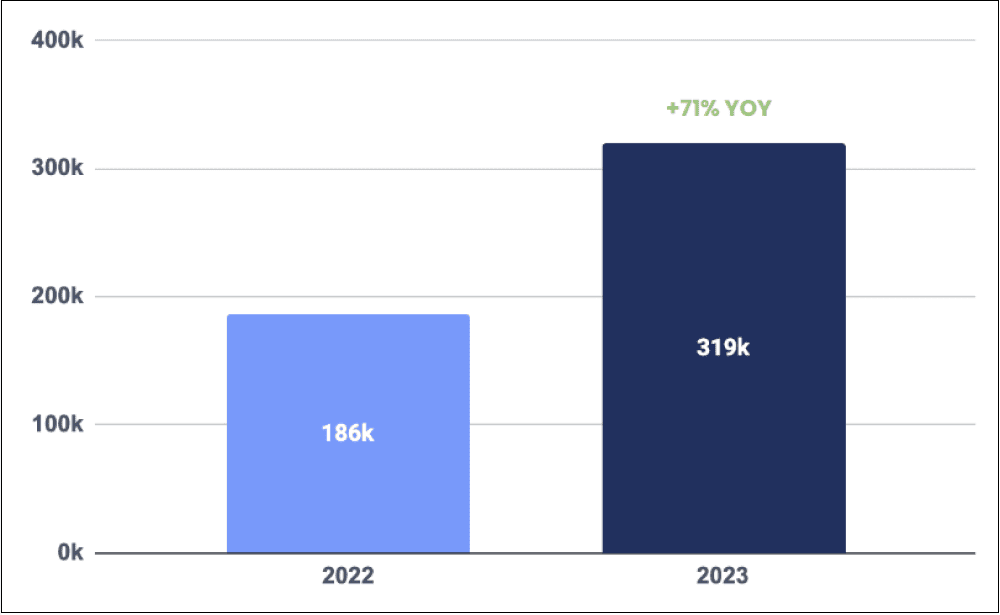
Interestingly, not every sector has seen the fruits of this application boom, with some industries becoming more popular than others among students.
Proportion of applications made to each sector
Proportion of applications made to each sector
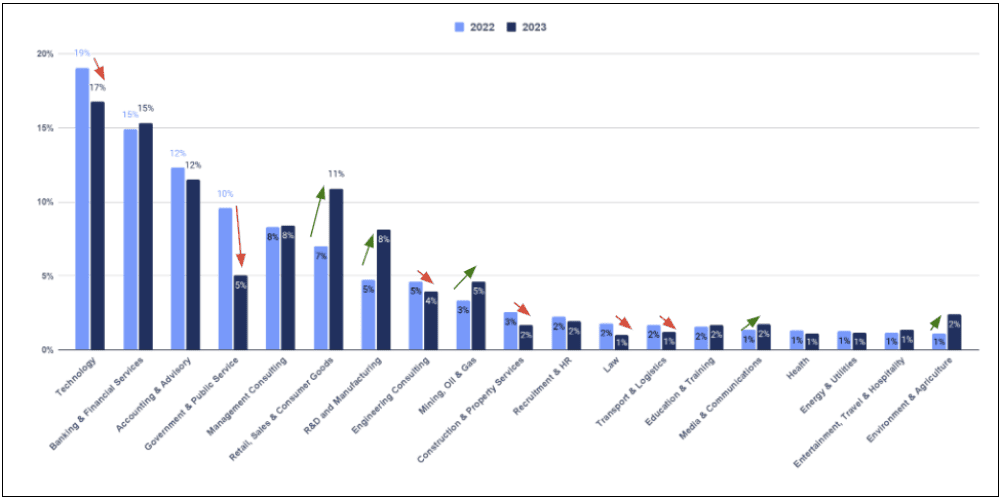
There could be various reasons as to why this is the case, one hypothesis is that Gen-Z are more money driven than previous generations, and government jobs don’t pay as much as the private sector. The technology sector has experienced a turbulent time, with large employers such as Atlassian and Amazon rolling out hiring freezes. Students are savvy, and they know that mass layoffs aren’t a good thing for graduates.
Business & Information Technology students are more diverse in where they are applying; Engineers are conversely more narrow in their applications
Business & Information Technology students are more diverse in where they are applying; Engineers are conversely more narrow in their applications
The recent trends in the Australian graduate recruitment industry have unveiled interesting shifts in the preferences and application patterns of different student cohorts. Business and IT students are displaying greater diversity in their choice of sectors, while engineers are favoring a select few industries, which tend to correlate with higher pay.
For business students, there has been a notable decrease in the proportion of applications received by the accounting industry, along with slight decreases in banking, technology, and retail sectors. On the other hand, government, engineering consulting, mining, and energy sectors have experienced a significant increase in applications. Last year, 6 sectors received 80% of applications for business students. This year, that increased to 8 sectors.
Business application proportions
Business application proportions
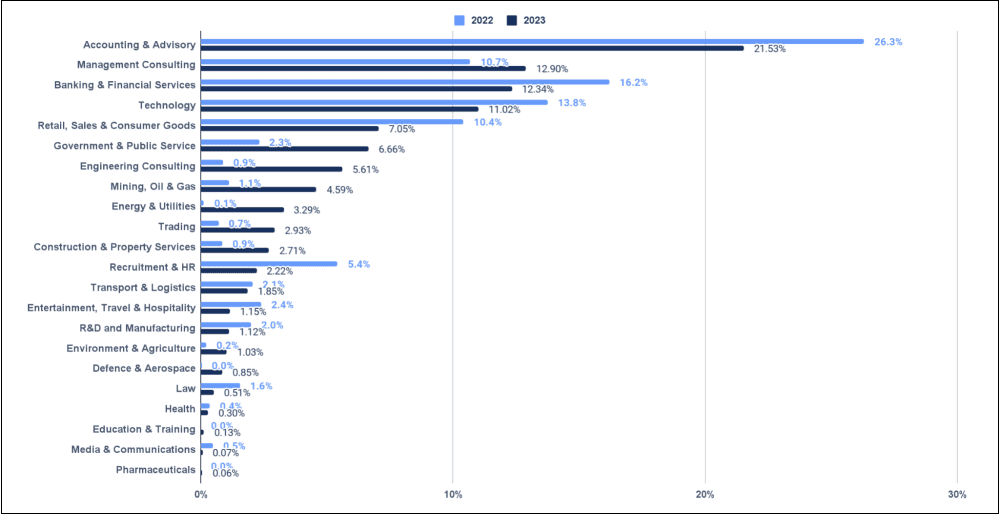
IT students have shown a similar trend, with a decline in the proportion of applications to the technology sector. However, sectors such as accounting, trading, mining, and engineering consulting have witnessed an increase in applications from IT students. Much like with business students, last year 6 sectors received 80% of IT student applications compared to 9 this year.
IT application proportions
IT application proportions

Engineers, in contrast, have displayed a more focused approach, with a notable increase in applications to the mining sector. Engineering consulting and trading sectors also experienced modest gains. However, there was a significant decrease in the proportion of applications received by technology firms. These trends indicate that engineers are channeling their efforts towards industries that are traditionally associated with higher pay and greater demand for their specialised skills.
Engineering application proportions
Engineering application proportions
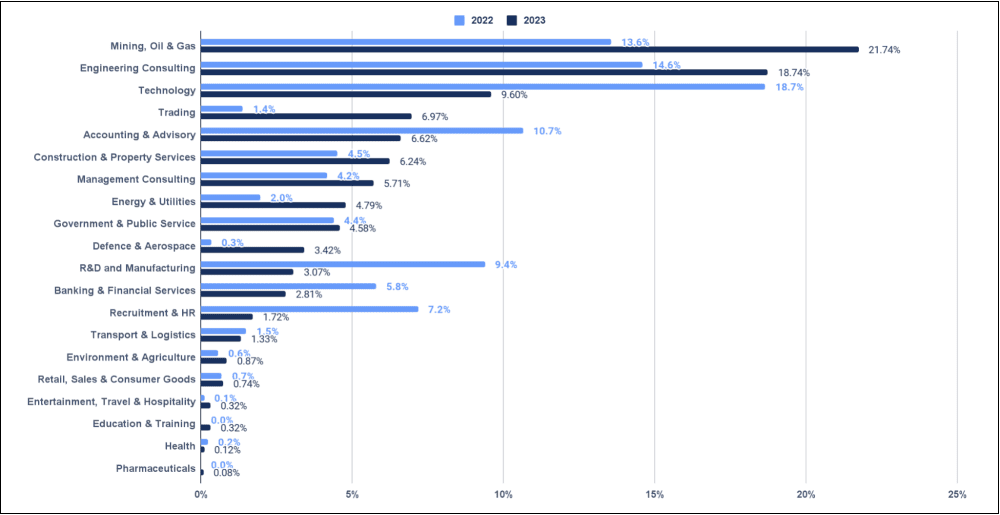
Remote working continues to be important for students. While Canberra is down from its’ highs during COVID
Remote working continues to be important for students. While Canberra is down from its’ highs during COVID
There has been an increase in the number of students searching for jobs from New South Wales, which correlates to the growing number of students studying within the state. Conversely, there has been a decrease in job searches from Victoria and Queensland, suggesting a potential shift in the perceived attractiveness of these states among graduates.
Interestingly, despite there being fewer students searching from within Victoria, it is emerging as a state where students are increasingly inclined to work. Victoria outperforms even New South Wales as the state where students select they want to work. On the otherend of the spectrum, Canberra has fallen from it’s highs of 7% of job searchers during covid to 2% of students. This aligns with the decrease in popularity of the federal government in students job applications.
When it comes to working arrangements, remote working remains a highly popular choice among students. In fact, it ranks as one of the top preferences, surpassed only by Queensland, Victoria, and New South Wales.
Where do students want to work?
Where do students want to work?
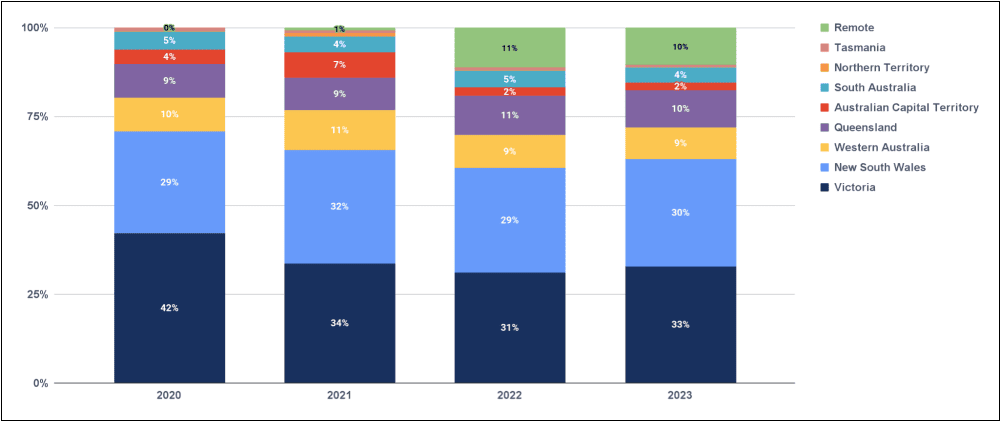
Searches for regional roles also remain low, especially in Victoria, Western Australia, South Australia and Tasmania. This tracks with the fact the Department of Education has found the proportion of regional students has been steadily declining since 2011. Recruiting students in regional areas will remain a challenge and employers will need to develop diverse strategies to entice more students into working in their regional offices.
More students are looking for internships; but the number of vacancies for these students hasn’t increased at the same rate as graduate positions
More students are looking for internships; but the number of vacancies for these students hasn’t increased at the same rate as graduate positions
An interesting trend is the increase in the number of students searching for internships compared to the previous year. However, the proportion of applications going towards internships has not matched this increase. This can be attributed to the limited availability of internship vacancies, which have not grown at the same rate as graduate vacancies. Despite this, there has been a significant increase in the overall number of vacancies, especially for graduate positions, compared to the previous year.
Jobs and internship vacancies by opening month
Jobs and internship vacancies by opening month
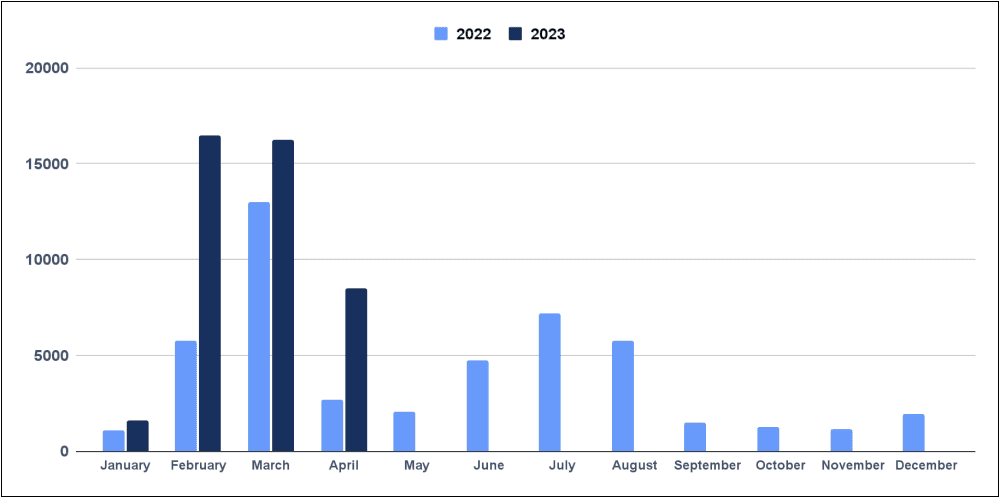
Students prefer more role-specific job listings
Students prefer more role-specific job listings
Another interesting trend is the practice of breaking down generalist job listings into multiple role-specific vacancies. In the past, most employers would list a single simple job listing - such as ‘2023 Graduate Program’. More recently, we have seen an increasing number of these postings being split up into multiple listings that are more related to the different roles within the graduate program. For example ‘Graduate Data Analyst’, ‘Graduate Electrical Engineer’, ‘Graduate Accountant

This approach has been well-received by students, particularly those in the engineering field, as role-specific vacancies outperform generalist listings by a significant margin of 14%. This indicates that students prefer applying for positions that align closely with their specific interests and qualifications.
Information technology graduation and study rates are improving; Engineering and Business are decreasing
Information technology graduation and study rates are improving; Engineering and Business are decreasing
The latest Department of Education degree completion and commencement data, shows that the number of students studying and graduating from IT degrees is at an all time high and continues to grow. This is even true of female tech students, whose graduation numbers has increased by 43% over the past 5 years. However, the supply of students studying and graduating from technology degrees remains below the level required to meet demand from major graduate employers. Even more drastic, is the strong growth in the number of international students studying and graduating from technology degrees. Major employers should tap into this diverse pool of international talent to address the skill shortage in the domestic audience.
Domestic vs international IT graduates
Domestic vs international IT graduates
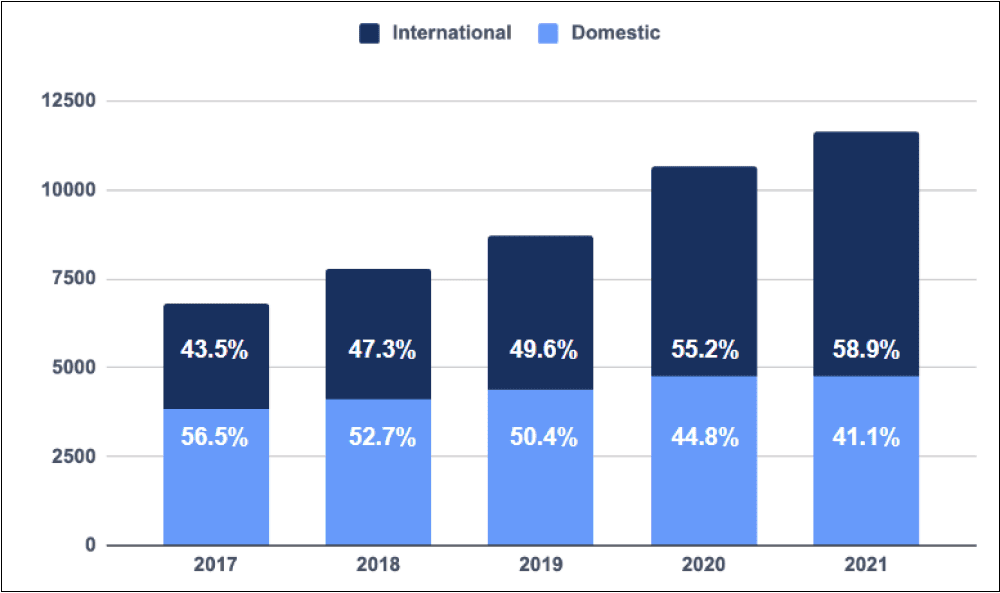
Domestic vs international engineering students commencing their degree
Domestic vs international engineering students commencing their degree
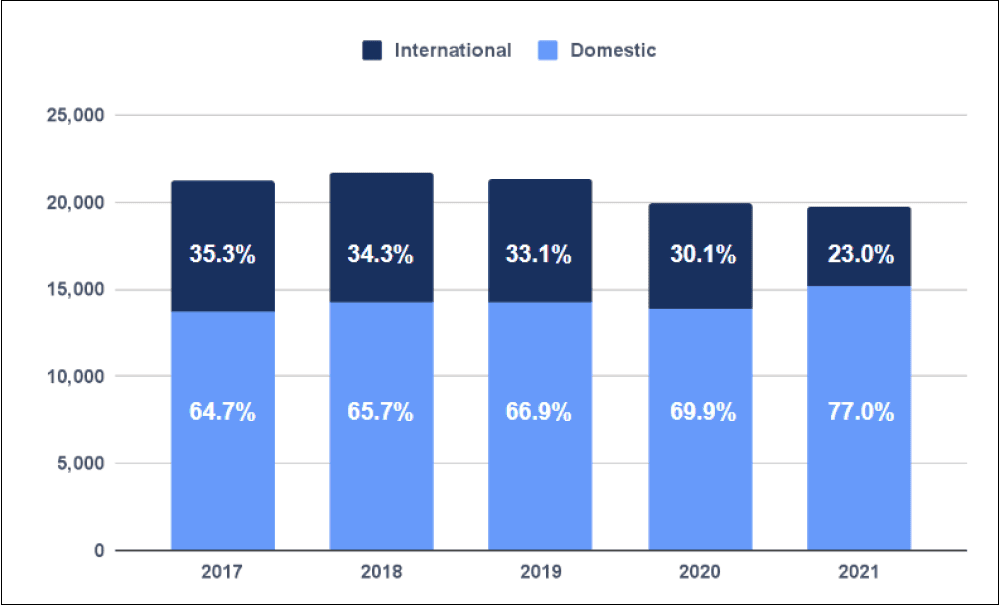
Tips for responding to these trends
Tips for responding to these trends
In response to the identified trends and to remain competitive in hiring ideal graduate talent, major employers should consider the following tips:
Improve Salary Offerings and Descriptions: With the increasing competition for top talent, it is crucial for employers to offer competitive salaries. Additionally, employers should effectively communicate the attractiveness of their salary packages, highlighting any additional benefits and incentives. Ensuring that salary information is clear, transparent, and appealing can help attract and retain sought-after graduates.
Craft Compelling Job Descriptions: To stand out among other employers, it is essential to create job descriptions that resonate with Gen-Z students. Employers should use language and content that align with the values and aspirations of this generation. Highlighting opportunities for growth, innovation, and purpose-driven work can make job descriptions more appealing. Furthermore, employers should optimize their presence on graduate jobs boards and social media platforms, where students actively search for opportunities.
Consider Timing and Visibility: While March tends to be the busiest time for graduate recruitment, employers should reassess if it is necessary to limit their visibility to this period. Expanding recruitment efforts throughout the year and being visible during off-peak times can help capture the attention of students who may not be following the traditional recruitment schedule. This flexibility can give employers an advantage in attracting top talent.
Expand Candidate Pool: To address the skill shortages and fulfill demand, employers should consider broadening their candidate pool beyond university students. This includes exploring opportunities to engage with students from alternative education pathways and considering international students who bring diverse perspectives and skills. Expanding the candidate pool can enhance the talent pipeline and provide access to a wider range of qualified candidates.
Plan Early and Strategically: To proactively address future talent challenges, such as increased demand for technology skills or declining enrollment in certain fields, employers should develop long-term engagement plans. This involves not only planning for the next recruitment campaign but also anticipating future talent needs and adapting strategies accordingly. By staying ahead of the curve and actively responding to changing market dynamics, employers can ensure they have the right talent in place when it's needed.
Summary
Summary
Understanding the current trends and preferences among graduates is vital for employers to effectively navigate the competitive graduate recruitment landscape. By adapting current strategies and responding to these trends, you can increase your chance of attracting and securing the top talent they need to drive your organisation forward.
If your organisation is looking to increase its employer branding to attract more applications, book a strategy session with one of our Graduate Attraction Consultants today.
The slide deck and the webinar
The slide deck and the webinar
Visualisations of all data discussed are available in this slide deck that was shared in the webinar. Further data on other student cohorts such as students studying Law or Science can also be found in these slides:

